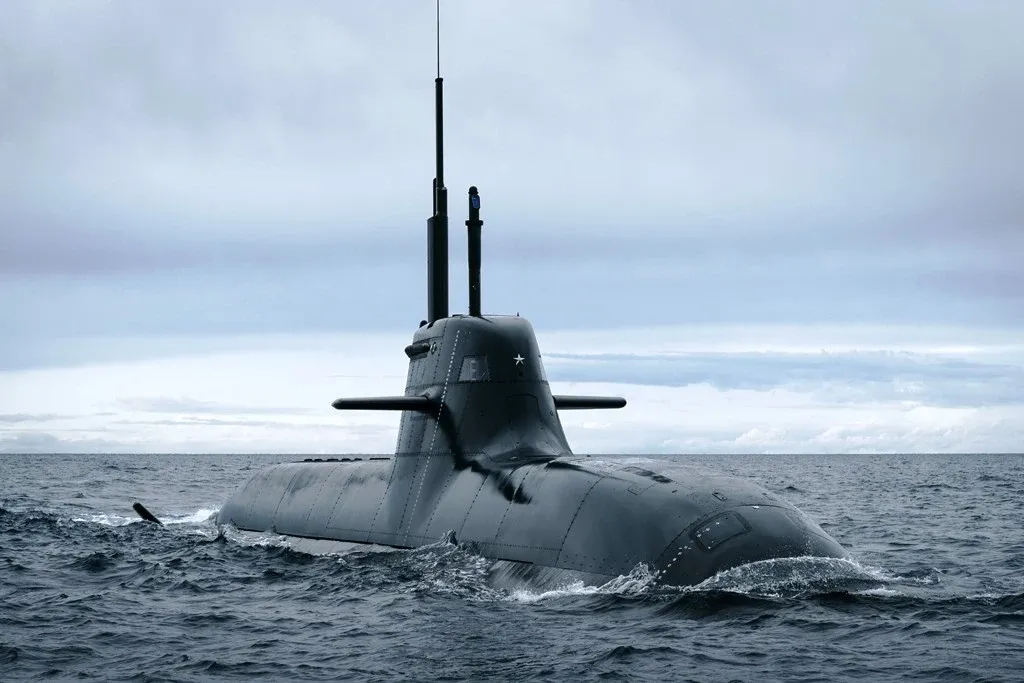What is AIP?
- With the emergence of submarines, there was a problem finding satisfactory forms of propulsion underwater.
- Traditional diesel-electric submarines need to surface frequently to charge their batteries and have an underwater endurance of only a few days.
- As battery technology improved, the endurance of these submarines increased proportionally. But it was not enough to last them beyond a week.
- In 1908, the Imperial Russian Navy launched the submarine Pochtovy, which used a gasoline engine fed with compressed air and exhausted underwater.
- These two approaches, the use of a fuel that provides energy to an open-cycle system, and the provision of oxygen to an aerobic engine in a closed cycle, characterise AIP today.
- Most of these systems generate electricity, which, in turn drives an electric motor for propulsion or recharges the boat’s batteries.
- The introduction of AIP vastly improved the underwater endurance of these submarines and gave them a distinct advantage.
- AIP is mostly implemented as an auxiliary source, with the traditional diesel engine handling surface propulsion.
- AIP technology can be installed on existing, older-generation submarines by inserting a new hull section during a retrofit.
- A typical conventional power plant provides 3 megawatts maximum, and an AIP source around 10 percent of that. A nuclear submarine’s propulsion plant is much greater than 20 megawatts.
- Advantages of AIP system:
- It allows the submarines to stay for longer hours in the water.
- It decreases the noise levels made by the submarines. This makes it hard to detect the submarines.
- Types of AIP: Open-cycle systems, Closed-cycle diesel engines, Closed-cycle steam turbines Stirling cycle engines and Fuel cells.
- The Defence Research and Development Organisation (DRDO) is using the fuel cells-based AIP System. It is unique as hydrogen is generated onboard. The plant was operated in endurance mode and max power mode as per the user requirements. The system is being developed by the Naval Materials Research Laboratory (NMRL) of DRDO.
Types of Submarines
- Conventional or Diesel-electric submarine: They need atmospheric oxygen to run the diesel generator, which in turn charges the batteries.
- Nuclear Submarine: It is a submarine powered by a nuclear reactor, but not necessarily nuclear-armed. They have considerable performance advantages over conventional submarines.
Q1: What is a Nuclear Submarine?
A nuclear submarine is a naval vessel that uses a nuclear reactor to power its propulsion. The nuclear submarines may or may not carry nuclear weapons. The history of nuclear submarines goes back to the 1950s when the US first developed it in 1954, named USS Nautilus. Soon it was followed by Russia and subsequently by other naval powers such as France, Britain and China. India too started engaging in nuclear submarine technologies, when it leased a Charlie I class SSN from the USSR in 1987 as well as developing its indigenous SSBN, INS Arihant in 2016.
Source: Indian Navy’s Ambitious Submarine Fleet Modernisation To Advance With AIP Technology
Last updated on December, 2025
→ Check out the latest UPSC Syllabus 2026 here.
→ Join Vajiram & Ravi’s Interview Guidance Programme for expert help to crack your final UPSC stage.
→ UPSC Mains Result 2025 is now out.
→ UPSC Notification 2026 is scheduled to be released on January 14, 2026.
→ UPSC Calendar 2026 is released on 15th May, 2025.
→ The UPSC Vacancy 2025 were released 1129, out of which 979 were for UPSC CSE and remaining 150 are for UPSC IFoS.
→ UPSC Prelims 2026 will be conducted on 24th May, 2026 & UPSC Mains 2026 will be conducted on 21st August 2026.
→ The UPSC Selection Process is of 3 stages-Prelims, Mains and Interview.
→ UPSC Result 2024 is released with latest UPSC Marksheet 2024. Check Now!
→ UPSC Prelims Result 2025 is out now for the CSE held on 25 May 2025.
→ UPSC Toppers List 2024 is released now. Shakti Dubey is UPSC AIR 1 2024 Topper.
→ UPSC Prelims Question Paper 2025 and Unofficial Prelims Answer Key 2025 are available now.
→ UPSC Mains Question Paper 2025 is out for Essay, GS 1, 2, 3 & GS 4.
→ UPSC Mains Indian Language Question Paper 2025 is now out.
→ UPSC Mains Optional Question Paper 2025 is now out.
→ Also check Best IAS Coaching in Delhi

















